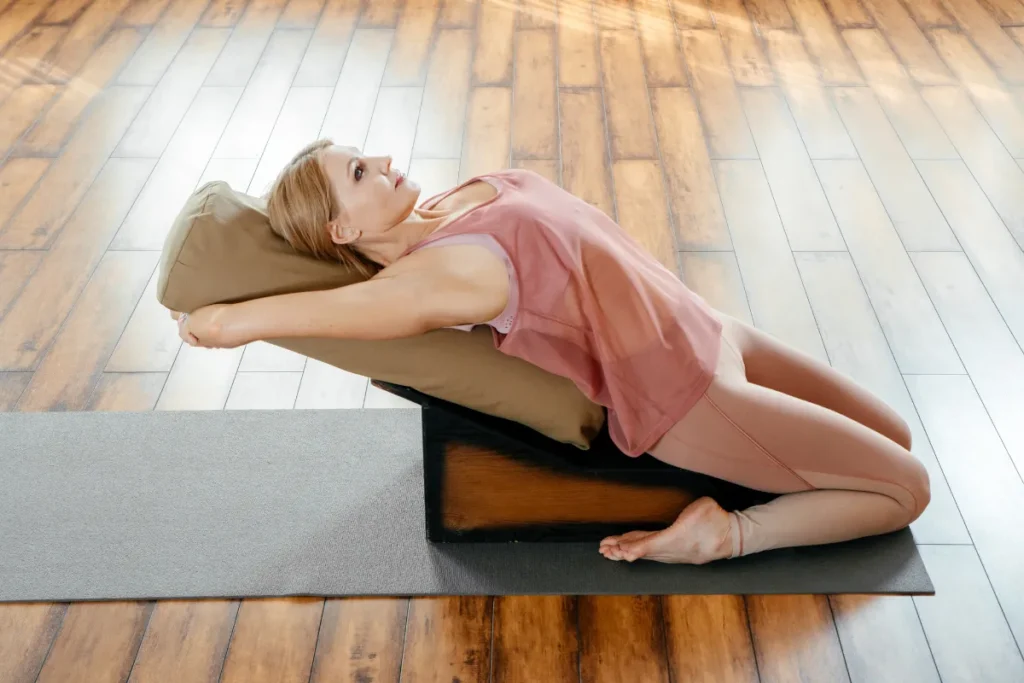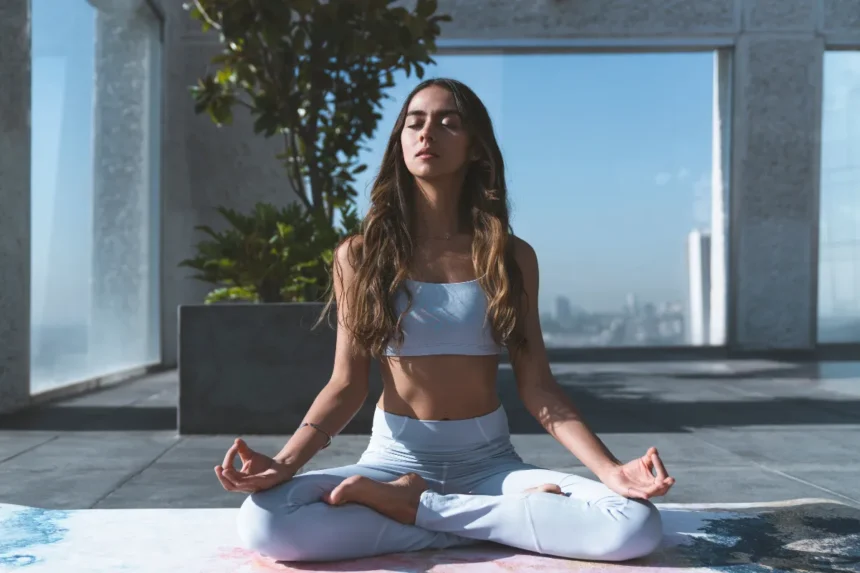In today’s fast-paced world, where stress, sedentary lifestyles, and poor dietary choices are prevalent, maintaining optimal blood circulation is crucial for overall health and well-being.
Poor blood circulation can lead to a myriad of health issues, including cardiovascular problems, fatigue, and even cognitive impairment.
Fortunately, yoga offers a holistic approach to improving blood circulation, promoting vitality, and enhancing overall health.
Understanding Blood Circulation
Before delving into how yoga can enhance blood circulation, it’s essential to understand the basics of the circulatory system.
The circulatory system is responsible for transporting oxygen, nutrients, and hormones throughout the body, while also removing waste products.
This process is facilitated by the heart, blood vessels, and blood itself.
Arteries carry oxygen-rich blood away from the heart to various parts of the body, while veins transport oxygen-depleted blood back to the heart.
The rhythmic contraction and relaxation of the heart pump blood through these vessels, ensuring a continuous flow to all tissues and organs.
However, factors such as inactivity, poor posture, stress, and certain medical conditions can impede blood flow, leading to circulation problems.
When blood circulation is compromised, cells receive inadequate oxygen and nutrients, impairing their function and potentially causing a range of health issues.
The Role of Yoga in Improving Circulation
Yoga, an ancient practice originating in India, offers a comprehensive approach to improving circulation by addressing physical, mental, and emotional aspects of health.
Through a combination of postures (asanas), breathing techniques (pranayama), and meditation, yoga enhances circulation by promoting relaxation, stretching muscles, and stimulating the cardiovascular system.
Asanas for Circulation
Yoga asanas play a significant role in improving blood circulation by increasing flexibility, reducing tension in muscles, and encouraging movement throughout the body.
Certain poses are particularly beneficial for enhancing circulation:
Forward Bends:

Poses such as Uttanasana (Standing Forward Bend) and Paschimottanasana (Seated Forward Bend) promote blood flow to the brain and heart while stretching the back muscles and hamstrings.
Inversions:

Inverted poses like Sarvangasana (Shoulder Stand) and Sirsasana (Headstand) reverse the effects of gravity, facilitating venous return and enhancing circulation to the upper body.
Twists:

Twisting poses like Ardha Matsyendrasana (Half Lord of the Fishes Pose) and Bharadvajasana (Bharadvaja’s Twist) wring out toxins from internal organs, improving circulation and digestion.
Backbends:

Backbends like Bhujangasana (Cobra Pose) and Ustrasana (Camel Pose) stimulate the cardiovascular system, increasing blood flow to the spine and organs while opening the chest.
By practicing these asanas regularly, individuals can alleviate stiffness, release tension, and promote better blood circulation throughout the body.
Pranayama Techniques
Pranayama, or yogic breathing techniques, are instrumental in enhancing oxygenation of the blood, calming the mind, and improving overall circulation.
Techniques such as:
Deep Breathing:
Diaphragmatic breathing, where the breath originates from the belly rather than the chest, increases oxygen supply to the bloodstream and promotes relaxation.
Kapalabhati:
Also known as Skull Shining Breath, this rapid breathing technique helps clear the nasal passages, invigorate the body, and stimulate circulation.
Anulom Vilom:
Alternate Nostril Breathing balances the flow of prana (life force) in the body, harmonizing the nervous system and promoting efficient circulation.
Practicing pranayama regularly enhances lung capacity, improves oxygen uptake, and optimizes circulation, leading to increased vitality and overall well-being.
Meditation and Relaxation
In addition to physical practices, meditation and relaxation techniques play a crucial role in improving circulation by reducing stress, lowering blood pressure, and promoting a sense of calm.
Mindfulness meditation, guided visualization, and progressive muscle relaxation are effective methods for:
Reducing Stress:
Chronic stress constricts blood vessels, impeding circulation.
Meditation promotes relaxation and triggers the relaxation response, allowing blood vessels to dilate and blood flow to improve.
Enhancing Vasodilation:
Practices that induce deep relaxation, such as Yoga Nidra, encourage vasodilation, widening blood vessels and promoting optimal blood flow to all parts of the body.
Improving Heart Health:
Meditation has been shown to lower heart rate and blood pressure, reducing the workload on the heart and improving cardiovascular function.
By incorporating meditation and relaxation into their daily routine, individuals can combat the negative effects of stress on circulation, promoting better overall health and vitality.
Lifestyle Factors and Yoga
While yoga offers numerous benefits for improving circulation, adopting a holistic approach to health is essential for optimal results.
In addition to practicing yoga regularly, individuals can enhance circulation by:
Staying Active:
Engaging in regular physical activity, such as walking, swimming, or cycling, complements yoga practice by promoting cardiovascular health and enhancing circulation.
Maintaining a Balanced Diet:
Consuming a diet rich in fruits, vegetables, whole grains, and lean proteins provides essential nutrients necessary for healthy blood circulation.
Hydrating Adequately:
Drinking plenty of water throughout the day helps maintain blood volume and ensures optimal circulation.
Avoiding Smoking and Excessive Alcohol:
Smoking and excessive alcohol consumption can constrict blood vessels and impair circulation, so avoiding these substances is crucial for vascular health.
Practicing Good Posture:
Maintaining proper posture while sitting, standing, and moving prevents compression of blood vessels and promotes efficient circulation.
By incorporating these lifestyle factors into their daily routine, individuals can optimize the benefits of yoga practice for improving blood circulation and promoting overall health and well-being.
Conclusion
In conclusion, yoga offers a multifaceted approach to improving blood circulation by addressing physical, mental, and emotional aspects of health.
Through asanas, pranayama techniques, meditation, and relaxation, yoga enhances circulation, promotes relaxation, and increases vitality.
By integrating yoga into their lifestyle and adopting healthy habits, individuals can unlock the flow of energy throughout their bodies, supporting optimal health and well-being for years to come.

